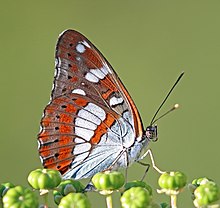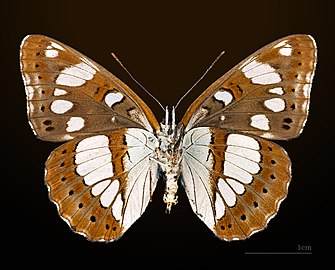| Limenitis reducta | |
|---|---|
 | |
| Upperside, North Macedonia | |
 | |
| Underside, Sithonia, Greece | |
| Scientific classification | |
| Domain: | Eukaryota |
| Kingdom: | Animalia |
| Phylum: | Arthropoda |
| Class: | Insecta |
| Order: | Lepidoptera |
| Family: | Nymphalidae |
| Genus: | Limenitis |
| Species: | L. reducta |
| Binomial name | |
| Limenitis reducta Staudinger, 1901 | |
| Synonyms [1] | |
List
| |
Limenitis reducta, the southern white admiral, is a butterfly of the family Nymphalidae.

